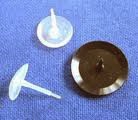Hopefully, since we are now getting
short glimpses of spring, divers are starting to plan for outings and courses
for the summer. Open water divers will
want to schedule their adventure dives for Advanced Open Water. For those who
want to delve more deeply into a particular dive experience, specialty courses,
such as Underwater Navigator, Peak Performance Buoyancy, Wreck diver and Night
Diver are your ticket. But if you are a
diver who really wants to stretch his skills and expand from caring just for
himself to caring for others, then Rescue Diver is the course you want.
There are many reasons people give
for wanting to take the Rescue Diver course beyond just a stepping stone to
Divemaster or instructor. For example, a
diver may have a child or loved one as a dive buddy, or they are the most
experienced diver in their group. These
divers feel that others are relying on them to be ready to help if there is an
emergency, so they want to prepare themselves.
Sometimes, the diver was a witness to an emergency and didn’t like
having to stand around not knowing how to help and have vowed to be ready the
next time. Whatever the reason a person
takes the Rescue Diver course, they always come away saying that it was the most
challenging and rewarding course they have taken. As an instructor, it is so rewarding when a
former student shares a story of how their training kicked in at the
appropriate time.
Here is an excerpt from an e-mail we
received from Sarah Barrett, a student of ours who has recently earned her dive
instructor certification in Florida:
“Two
days before our divemaster course was over, we were teaching an open water
class with two open water students: Sam, who was 67, and actually his dad who
was probably in his 80's. We had done some of their confined water skills in
the morning, and then in the afternoon we took them both out for the open water
dives. On the second dive towards the end, I looked over upon ascent, and Sam
was signaling to another kid in my class that he was out of air, although you
could see he was still breathing from his primary. Aaron, the kid in my class,
gave Sam his alternate anyway, and they ascended together. Once we all got to
the surface, Sam spit his regulator out of his mouth and started yelling
"It felt like I wasn't getting any air!" over and over again, so we
calmed him down a little and said it was time to swim over to the boat. While
on our way to the boat, we were holding onto the mooring line, and Sam tried to
grab a piece of it, but over and over again would grab the air-we immediately
knew something wasn't right. Claude, my divemaster instructor, said "Sam
are you ok?" and Sam kept saying "No." Before we knew it Sam had
put his head back in the water and fell unconscious. Me and Aaron immediately
started towing Sam back to the boat as fast as we could, while Claude removed
his weight belt, and we unclipped his gear as we got closer to the boat. Claude
yelled to the captain that we had a REAL emergency, and I yelled at the first
mate to get the O2. This was the scary part-Sam's face was so blue it scared
the living crap out of me. I had never seen anyone look that blue before. As I
kept Sam's airway open, we all lifted him onto the back of the boat (and he was
probably 250 so it wasn't as easy as it sounds.) We then got him onto the boat
and gave him oxygen right away, and within a minute or two he was able to open
his eyes and tell us that he was ok. After we got back to the canal obviously
we had to meet the ambulance and the coast guard, and Sam was taken to the
nearest hospital. He is ok and his dad, Jim, actually came back the next day to
finish his open water.
Needless to say I was blessed
to have had my rescue training with you guys, because right when Sam went
unconscious, I didn't think, I just acted. It felt amazing to have helped
actually save someone's life, and I just wanted you two to know that you did an
amazing job in preparing me for a situation like that. I'm also glad it had such
a good ending and that Sam was okay!”
The course starts with the
prerequisite Emergency First Response course.
In the EFR course, the student learns first aid, CPR, AED and oxygen
use. During this course we start to
introduce some diving scenarios in order to start participants thinking how
these skills apply in a diving situation.
Moving into the actual Rescue Diver course, we spend a couple of nights
in the classroom working our way through the manual. Then the fun begins! We
spend an entire day practicing rescue skills and playing out some situations
with the help of volunteer “victims” in open water. The next day, we return to the open water
where the instructor and volunteers set up real life scenarios that the Rescue
Diver candidates must react to and act upon. Scenarios are played out until
each candidate responds appropriately and with confidence. It is exhausting and exhilarating at the same
time! Best of all, successful candidates earn not only the certification card,
but the coveted Manta Divers’ red touque.
Emergency First Response course is
scheduled for April 1 & 3 at 6:30 at the shop
Rescue Diver course is scheduled for
May 20 & 22, classroom, June 6 & 7 open water training.







